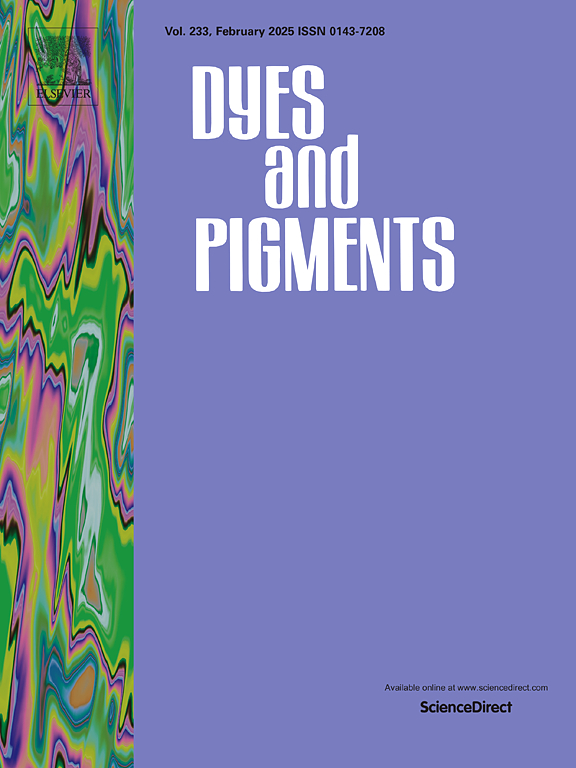Synthesis and investigation of easily modifiable nicotinonitrile-based building blocks for organic donor-acceptor chromophores
IF 4.1
3区 工程技术
Q2 CHEMISTRY, APPLIED
引用次数: 0
Abstract
Convenient methods for synthesizing two isomeric nicotinonitrile-based building blocks with 2-amino-4-aryl- and 4-amino-2-arylpyridine-3,5-dicarbonitrile moieties were developed. These blocks were modified at the C6 position using N-, O-, or C-nucleophiles. The investigation of the effect of solvents on the spectral and luminescent properties of the synthesized chromophores revealed that the emission characteristics of 2-aryl derivatives are more significantly influenced by the polarity of the solvent, while 4-aryl-substituted molecules are primarily affected by acidity. The absorption and emission maxima of the starting 4-aryl- and 2-aryl-6-chloropyridines were observed at lower energy wavelengths than those of the N-, O-, and C-substituted derivatives. Chemosensory studies showed that the emission intensity of 6-amino-2-(dicyanomethylene)-4-(4-(dimethylamino)phenyl)-1,2-dihydropyridine-3,5-dicarbonitrile increased significantly in the presence of Ag+ ions in aqueous solution.
易修饰的烟腈基有机给受体发色团的合成与研究
建立了以2-氨基-4-芳基和4-氨基-2-芳基吡啶-3,5-二腈为基的两种异构体烟腈基构筑块的简便合成方法。用N-、O-或c -亲核试剂在C6位点修饰这些块。研究了溶剂对合成的发色团的光谱和发光性质的影响,发现2-芳基衍生物的发射特性受溶剂极性的影响更显著,而4-芳基取代分子的发射特性主要受酸度的影响。4-芳基-和2-芳基-6-氯吡啶在较低的能量波长处的吸收和发射最大值高于N-、O-和c -取代衍生物。化学感觉研究表明,水溶液中Ag+离子存在时,6-氨基-2-(二氰乙烯)-4-(4-(二甲氨基)苯基)-1,2-二氢吡啶-3,5-二腈的发射强度显著增加。
本文章由计算机程序翻译,如有差异,请以英文原文为准。
求助全文
约1分钟内获得全文
求助全文
来源期刊

Dyes and Pigments
工程技术-材料科学:纺织
CiteScore
8.20
自引率
13.30%
发文量
933
审稿时长
33 days
期刊介绍:
Dyes and Pigments covers the scientific and technical aspects of the chemistry and physics of dyes, pigments and their intermediates. Emphasis is placed on the properties of the colouring matters themselves rather than on their applications or the system in which they may be applied.
Thus the journal accepts research and review papers on the synthesis of dyes, pigments and intermediates, their physical or chemical properties, e.g. spectroscopic, surface, solution or solid state characteristics, the physical aspects of their preparation, e.g. precipitation, nucleation and growth, crystal formation, liquid crystalline characteristics, their photochemical, ecological or biological properties and the relationship between colour and chemical constitution. However, papers are considered which deal with the more fundamental aspects of colourant application and of the interactions of colourants with substrates or media.
The journal will interest a wide variety of workers in a range of disciplines whose work involves dyes, pigments and their intermediates, and provides a platform for investigators with common interests but diverse fields of activity such as cosmetics, reprographics, dye and pigment synthesis, medical research, polymers, etc.
 求助内容:
求助内容: 应助结果提醒方式:
应助结果提醒方式:


